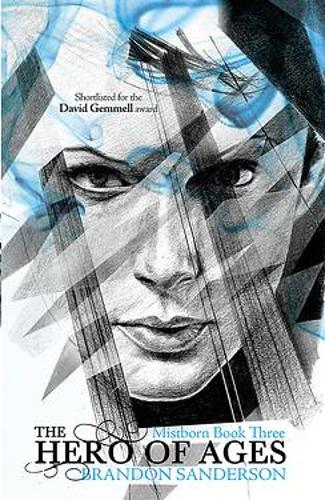
The third book in the first Mistborn trilogy is very different to the first two. While the first was a fairly clear-cut case of a ragtag group coming together to overthrow an evil regime and the second was a nuanced book about how to bring peace and stability in the power vacuum that follows the fall of an evil dictator, the third was more about everyone facing the end of the world. Their goals and the course of action they could take to resolve things was much less obvious. For these reasons, the book could feel like it had less direction and overall felt a bit slower than the other two, but it was more than made up for with its fantastic ending.
For me, Vin and Sazed remained the most enjoyable characters throughout. Vin is very much a figure of hope for the world (like Kelsier was, to some extent), while Sazed has changed a lot following the death of Tindwyl at the end of the previous novel. He’s lost his enthusiasm for learning about the world’s religion and has kind of lost all enjoyment in life whatsoever, including his faith in any religion. Going believing all religions, to not caring about any of them creates a fascinating spiritual dilemma for him. Throughout the whole series, Sazed and Vin have been my favourite characters and I found that their ultimate fates brought their character arcs to a fantastic close. I won’t spoil what happens, but it was incredible.
Vin’s own optimism and the way that she keeps working to find solutions to their seemingly unsolvable problems, contrasts nicely against her husband, Elend, who doesn’t give up, but seems very defeatist. While Elend had never been one of my favourite characters, it is interesting to see what ultimately happens; he goes from an idealistic youth with no power, to an in-experienced leader who makes a lot of mistakes, to a much more wary man who puts on a brave face in front of what he might privately consider insurmountable odds. In some ways, his gloominess and cynicism can be a bit annoying, but I do appreciate the evolution the character has undergone. It’s interesting to see him acting as a Mistborn now too – it adds a nice change to his dynamic with Vin.
Speaking of ultimate fates, the fantastic ending that I mentioned is one which provides lots of information about the ways in which Brandon Sanderson’s Cosmere works. There are some pretty mindblowing occurrences and revelations – there’s no way anybody could predict the way that it ends (probably), but it’s very out there. However, unlike other fantasy novels which opt for very out-of-this-world resolutions, this one is easy to follow and makes a lot of sense.
I suppose another aspect that I like about this novel is that it tells the story of a civilisation that’s on the brink of collapse, facing an apocalyptic event that is likely going to bring about the end of the human race. It’s a bleak situation which, to some extent, readers will be able to compare against the state of the world, but the optimistic way in which things are ultimately handled is refreshing.
Another positive to this book was the fact that Spook, as a character, finally comes into his own. While he’s initially the young side character who doesn’t quite fit in, here he starts to become a lot like Kelsier (much more than Vin does), including adopting some of his flaws. Spook was a character who I was kind of indifferent to throughout the first two books, so I was impressed to see the extent to which he grew and developed here, becoming one of my favourite characters for the final book.
All in all, I think I’d say that the second book in the series was my favourite one, but the strength of the ending here was extremely satisfying – much moreso than the endings of the first two novels. If the entire thing had been as good as that, it would easily have been my favourite, but as it happens, chunks of it do feel a bit slow, so I think the second book was my favourite, but if you read the first two, I strongly recommend investing in the second.
Rating: 9.1/10
